Your Cart is Empty
Save up to 20% on all Harkla products & courses during Autism Acceptance Month! Click Here to See the Sale

If you are on this page, then chances are you either already know what stimming behavior is, or are curious about it and what can be done to help alleviate it.
Before we get into our list of the 10 best autistic stimming toys, let's take a quick look at what stimming behavior is as it relates to autism.
Also, if you'd like to learn more about our top picks for adult sensory products, click here.
People with autism typically have a level of sensory integration dysfunction that causes them to misinterpret, be overwhelmed by, or under-register sensory information from their bodies and surroundings. This sensory dysfunction often drives some stereotypical behaviors that are characteristic of a diagnosis of autism.
For more information on sensory processing and autism, be sure to read Harkla’s article here.
In some cases, people with autism engage in self-stimulation, or “stimming” behaviors in an effort to combat sensory overstimulation, tune-out the extraneous sensory information, and decrease their arousal level. In other cases, the self-stimulation is to provide more sensory information in order to increase their arousal level because their bodies are not appropriately registering the information and they need more input!
These self-stim behaviors are repetitive in nature, can be whole-body movements or movements of objects, and serve a sensory purpose. While it looks like fidgeting, it is something a bit beyond your average fidget.
Common autism stimming behaviors are:
The list of self-stimulatory behaviors is much longer than those we’ve listed, but when you look at the sensory functions of some of these stims, it’s easier to recognize their purpose and perhaps find a replacement that meets these sensory needs in a different way.
When looking at why people with autism prefer certain stims at different times, it’s important to look at the purpose the movements serve from a sensory perspective. We use our sensory systems to help regulate, focus, interact, and function in our daily lives.
When considering specific stimming behaviors in terms of one’s auditory, visual, tactile, vestibular, gustatory (taste), and olfactory (smell) senses, it is easier to identify the why behind the behavior and to find a replacement, like one of the toys below, if you are looking for one.
If you read our guide, Everything You Need to Know About Fidget Toys for ADHD and Anxiety, you learned about some fabulous fidget toys that support focus and engagement.
Fidget toys can be stim toys and vice versa!
The benefits of both are positive, no matter what the toys are called. That being said, we will refer to the products in this article as “stim toys” because they are often chosen to redirect or replace “stim” behaviors.
For people with autism, the recommendations for complexity and function of stim toys may be slightly different depending on the user’s motor skills, preferred stim behaviors, and reasons for implementing a stim toy. Some parents, behaviorists, therapists, or educators may base their selection of a stim toy in order to provide a more appropriate replacement behavior that is less distracting or less stigmatizing. In some cases, the stim toy redirects what may turn into self-injurious stim behavior.
Whatever your reason for researching stim toys or fidget toys for autism, keep the preferences and sensory profile of the user in mind so you can appropriately match the options to their needs. Remember, we all have multiple tools in our self-regulation toolbox, so explore multiple options!
There is a long list of toys that could be used as stim toys, so we are breaking the list down into 10 different categories under which you can look for stim toys on.
If you have any favorite stim toys that aren't on the list, let us know in the comments!
One of the hallmark sensory seeking behaviors is hand flapping and finger flicking, these hand movements provide increased input to the joints of the arms and hands. In an attempt to curb some of these extraneous movements while still providing feedback, check out these toys to fiddle with:


Movements needed to shake the following toys involve those finger and hand movements required to “fiddle”, and then some more - the upper arms and shoulders are involved when accessing these types of toys:

Tapping into the visual system can be calming for many individuals, especially those with autism. Think about the visual effects of a lava lamp, waiting for a slow change.

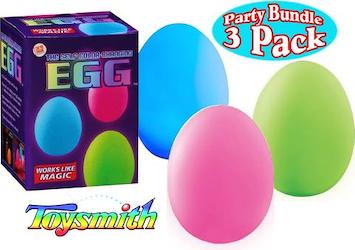
Tapping into the auditory/sound system is predictable sensory input that can offer a calming effect. Just make sure its a sound that is tolerable to caregivers and adults too!

These sensory toys can offer fine motor benefits as they tap into hand strength to pull, squeeze and squish. The proprioceptive and tactile systems are engaged when manipulating squeeze toys, both systems offer self-regulation benefits.

The visual system is engaged when viewing the following sensory toys; it is important to evaluate the toy to make sure it is calming and regulating or alerting and arousing so that it aligns with your goal for the child.
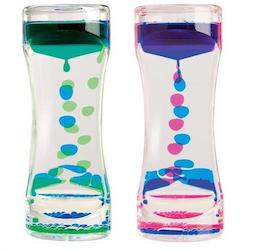
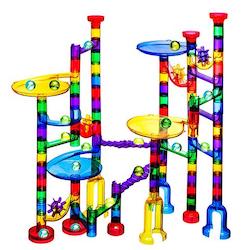
Spinning toys also stimulate the visual system and can have different effects for each individual. For example, using a fidget spinner can be calming for some kids, but watching things like a carousel or a swing elicit a feeling of dysregulation for others.
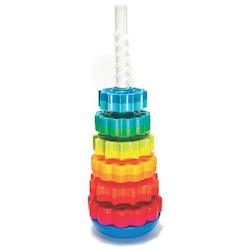
Often, kids with autism can be seeking oral motor input, and may do so inappropriately - often ruining clothing, and/or putting non-food items in their mouths. In an attempt to find a replacement item that satisfies the need for oral/chewing input, consider trying one of the following:


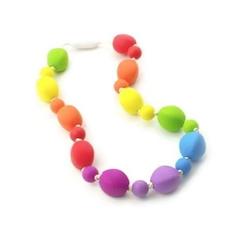
Vibrating toys stimulate the tactile and proprioceptive systems. The constant input combined with some deep pressure can offer a sense of calm and organization. Some toys that engage the mouth (like a vibrating toothbrush) can also have oral motor effects that help with food tolerance or speech development too!

Many parents of kids with autism report some atypical behaviors when playing with toys at an early age. They may line up cars, organize animals according to size or color, or something that looks like non-functional play. Seeking order is calming for them, and makes sense in their world. From a sensory perspective, the behavior of lining up toys engages both the tactile and visual systems.
Every child and person with autism is different. They have specific sensory interests as well as clearly defined personal interests. The sensory considerations for stim toys are most important when looking at the stim behaviors you want to replace or redirect, not so much the recommendations for products we’ve listed!
These are intended to jumpstart your stim toy shopping by identifying how one toy might be differently used than another.
Let us know what stim toys are preferred in your home! We’d love to add your ideas to our lists too!
And If you're looking for ideas on ways to help your child at school, you can check out our list of favorite sensory tools for the classroom here.
very much useful, thanks a lot.
I am autistic, and while the explanation for the purpose of self-stimulatory behaviors is accurate, the notion that we need to stop or replace them (as referenced in the flapping example) when they are not harming us or others, is outdated and unfair. As long as there is no damage being done, there is no reason why we shouldn’t be permitted to stim in whatever ways work best for us. We are people too, and deserve to be treated as such.
My husband plays with a stick. Usually cat stick all day long without the cat is this atom behavior? He was diagnosed with ADHD as a teenager, and is currently off his adderall.
thank you. this is so informative and helpful.
You have covered so many bases and taught me in the process. Very informative and eye opening . So much go to info also with the stim toys , movies and series on TV and links to many interesting articles as well. Thank you so much.
Excellent article and informative. I saved the shops that carry stim and fidget toys. Thank you so much.
My sons stimming is banging sticks together, or train tracks together or any objects together making a sound. Bought him drumsticks but that did not last long. Any ideas would be much appreciated.
Hi Sarah,
We’re glad you found this article helpful!
All the best,
Nicole from Harkla
Thank you. Very helpful and informative.
Hey Anthony,
You are very welcome. Thank YOU for leaving feedback. We love to hear from our readers.
All the best,
Nicole
Harkla Happiness Ninja
thank you for the info and helpful suggestions
Comments will be approved before showing up.



Bob
August 17, 2023
I only recently questioned whether I was actually high functioning autistic. But the only thing that has been effective for me over the years is Baoding Balls, also known as Chinese healthy balls. They are metal and heavy, come in sets of two, and require some dexterity in order to spin them in your hands in a clockwise or counter clockwise fashion. I can even spin them with one set in each hand at the same time providing maximum satisfaction. For most children these are impractical. But for an adult (and for me) they are perfect. I’ve never seen them offered as stimming toys though you can easily find them on ebay etc. for a decent price/